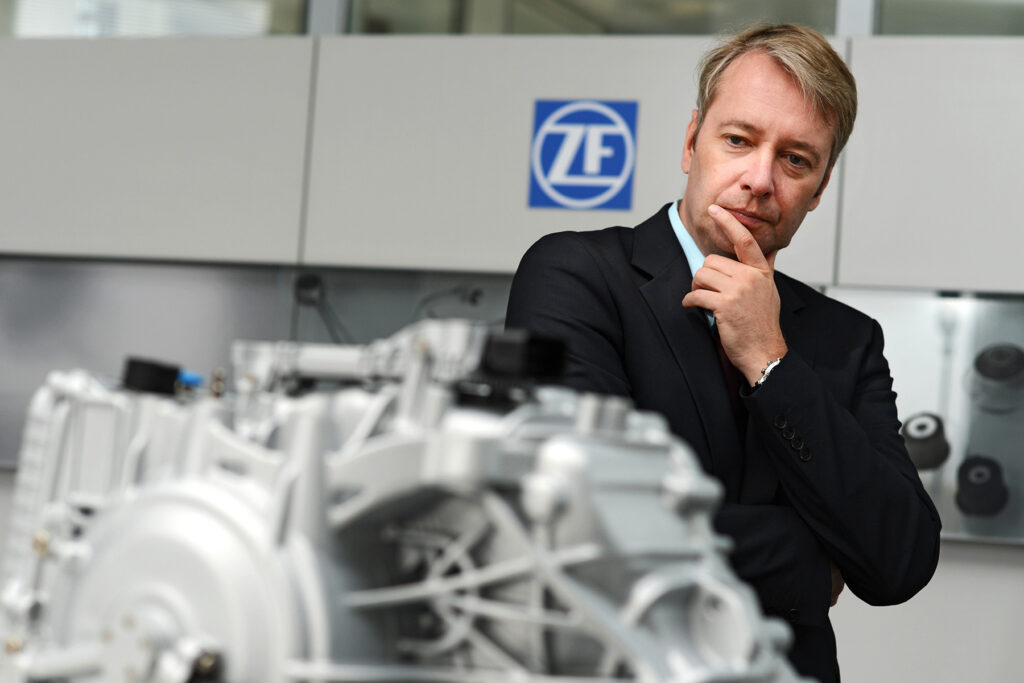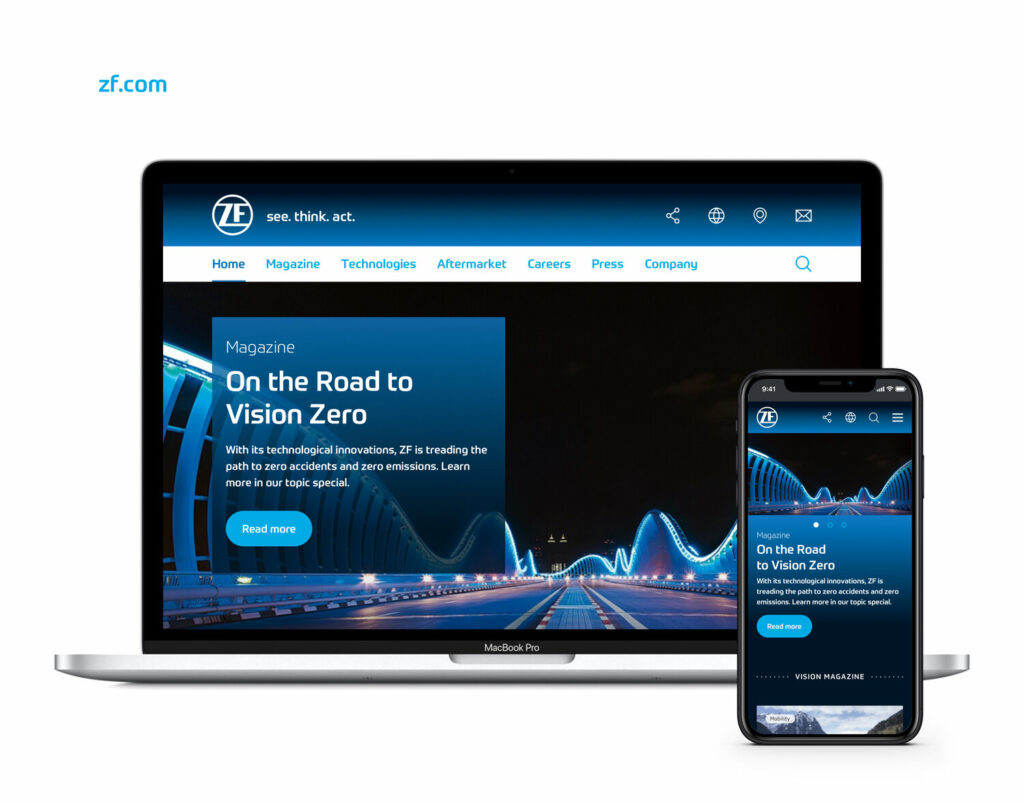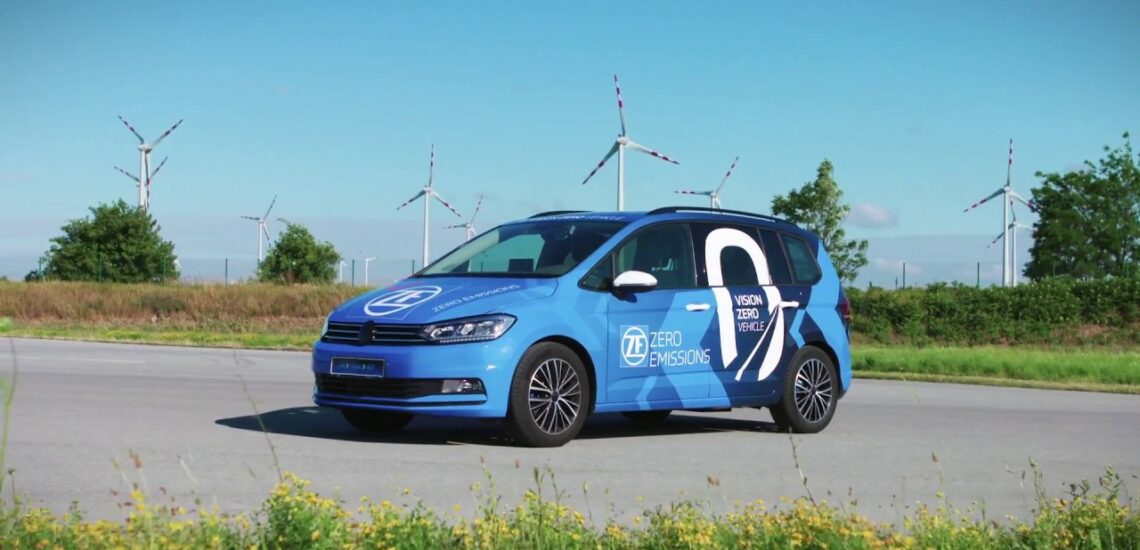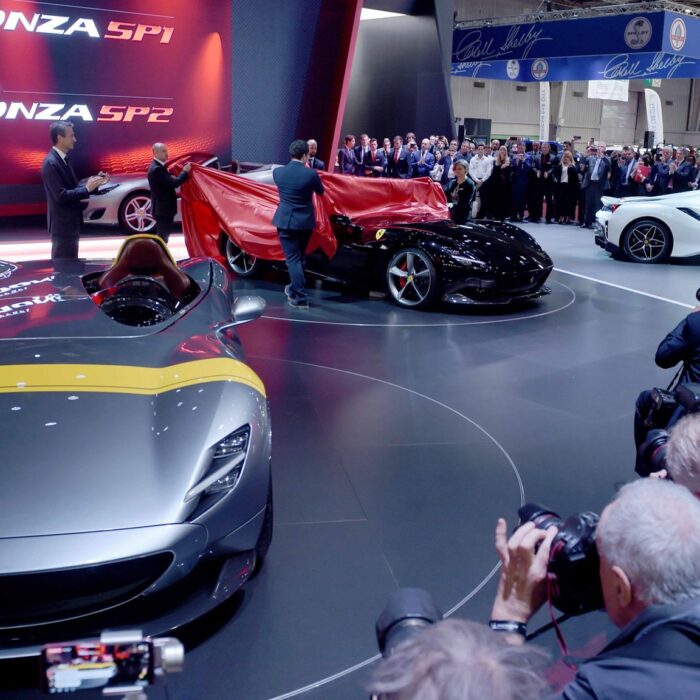Otomobil parçalarının önemli bir tedarikçisi olan ZF, güvenlik, konfor ve ekolojiyle ilgili bir dizi teknolojiyi uyguladığı Vision Zero prototipini inşa etti. Bunlar çeşitli yeni asistanlar, acil durum sistemleri, otonom sürüş fonksiyonu, elektrikli tahrik ve diğer birkaç geliştirmedir. Baştan aşağı yeniden tasarlanan Volkswagen Touran, ZF’nin sıfır egzozlu, kazasız bir ulaşım dünyası hayalidir. Bu nedenle otomobilin adı ve prototipin yanlarına Sıfır emisyon ve Sıfır kaza sloganları yazılmıştır.
Touran’ın ön tarafına içten yanmalı motor yerine büyük bir lityum pil yerleştirildi, Almanlar ayrıca arkadaki süspansiyonu tamamen değiştirdiler. Standart dolgu yerine, kompakt minibüs ZF mSTARS ünitesini aldı: entegre elektrikli tahrik ve aktif arka aks direksiyonuna sahip modüler Yarı-Çekici Kol Arka Süspansiyon – hem manevra kabiliyetini hem de dengeyi iyileştirmek için etkinleştirilebilen AKC (Aktif Kinematik Kontrolü).
Şasi bileşenleri yelpazesi sMOTION sönümleme sistemiyle genişletildi. Her süspansiyona, amortisör çubuğuna bir yönde veya diğerinde ek kuvvet oluşturabilen bir pompa yerleştirilmiştir. Böylece amortisör, yalnızca titreşimleri azaltan pasif bir cihazdan, tümseklere daha doğru yanıt verebilen ve kontrol elektroniğinden gelen sinyallerle gövdenin sallanma hareketini azaltabilen aktif bir cihaza dönüşür.
ZF tasarımcılarına göre, elektrikli tahrikten şasinin aktif bileşenlerine kadar bu sistemler, tam veya kısmi otonom sürüş yeteneklerine sahip araçlarda, çeşitli acil durum kontrol sistemlerinde çok faydalıdır. Burada ZF, radarlar, lidarlar ve stereo kameralar, yapay zeka blokları geliştiren birkaç ortakla işbirliği içinde çalışmaktadır. Ve ZF’nin kendine ait bazı ilginç fikirleri vardır.

İlginç yeni sistemlerden biri de sürücünün dikkatini kontrol eden Sürücü Dikkat Dağıtma Yardımcısı. Bu, karanlıkta bile çalışan ve bir kişiye odaklanan bir kamera (bu durumda lazer aydınlatmalı). Sadece gözlerin değil, tüm başın pozisyonunu belirler. Elektronik, sürücünün yola bakmadığını görürse, kabinde bir bip sesi duyulur ve gösterge panelinde bir uyarı ışığı yanar. Aynı zamanda, bilgisayar emniyet kemerini sıkar ve otomatik şerit tutma modunu kendisi açar. Sürücü bundan sonra uyarı sinyallerine yanıt vermezse, araç kademeli olarak yavaşlar ve ardından önlemler alarak sağa doğru gider ve mümkün olan en kısa sürede güvenli bir yerde durur.
Yanlış Yol Engelleme sistemi, sürücünün trafik kavşağında yanlışlıkla hata yapması durumunda karşı şeritte sürüşü ve kapalı çıkışlarda sürüşü engeller. Yüksek hassasiyetli haritalar, işaretler ve işaretlemelerle birlikte yönlendirilir ve sürücü yönelim bozukluğu veya yorgunluk nedeniyle direksiyonu yanlış yöne çevirmeye başlar başlamaz etkinleştirilir. İlk aşamada, elektronikler ışık ve ses uyarısı, emniyet kemerinin titreşimi ve direksiyon simidi jantındaki direnci artırır. Sürücü yanlış yöne dönerse, elektronikler kontrolü ele alır, aracı yolun dış kenarına hareket ettirir, aracı yavaşlatır ve durdururken tehlike uyarılarını ve kısa farları açar. Daha sonra, elektronikler oranın güvenli olduğuna karar verirse, potansiyel olarak tehlikeli durma bölgesinden geri veya ileri doğru hareket ederek çıkabilirsiniz.
“Sadece tüm arabalar elektrikli, otonom ve tek bir ağa entegre olursa sıfır kaza ve sıfır emisyon elde edebiliriz. Bunu mümkün kılmak için çok çalışıyoruz” dedi ZF Friedrichshafen AG CEO’su Dr. Stefan Sommer, Avusturya’da gösterilen gelişmeler yelpazesi hakkında yorum yaparken.
Şirketin uzmanları, güvenlik sistemlerinin ideal olarak kapsamlı olması, durumla, diğer araçların hareketleriyle, yol hizmetlerinin çalışmalarıyla vb. tam uyum içinde çalışması gerektiğini açıkladı. Benzer şekilde, aracın içinde, entegre bir yaklaşım, bir kaza riskini azaltabilen veya sonuçlarının ciddiyetini azaltabilen tüm bireysel aktif ve pasif güvenlik cihazlarının etkileşimini içerir.

Sıfır emisyona geri dönerek şirket başka bir gelişme daha gösterdi: Openmatics araç içi telematik cihazı ve filo operatörünün yalnızca araçların konumunu değil, aynı zamanda iş yükünü ve elektrikli araçlarda şarj seviyesini de takip etmesini sağlayan Dashboard web uygulaması. Bu, operatörlerin mevcut sürüş menziline göre rotalar planlamasını, müşterinin isteğine (varış noktası) en uygun araçları göndermesini ve böyle bir filonun genel enerji tüketimini optimize etmesini sağlar.
Bu bir çeviridir. Orijinalini buradan okuyabilirsiniz: https://www.drive.ru/technic/595f2239ec05c4fd19000010.html

Yayımlanmış Eylül 23, 2021 • Okuma süresi: 4 dakika






